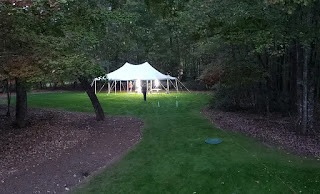Brown Patches in November/December
I get calls all the time from customer worried about their lawns. They typically go something like this: "My lawn is turning yellow! What's killing it?"
The common concern is a fungus is taking over. The reality is quite different. Almost always, the culprit is the patches of Bermudagrass in the lawn start to turn brown.
No Cure for This
Although some might think this a result of some lack of effort from their lawn care provider to have prevented this catastrophe, this could not be further from the truth. When it gets cold, warm season grasses (Bermudagrass included) go dormant and turn brown. There is good and bad in almost everything in life. the good thing about Bermudagrass is that it is tough, thick, resilient, and drought resistant. The bad side is that it looks TERRIBLE in cold weather.
You Have Options
When it comes to Bermudagrass you do have a couple of options. The first option is to kill it in the Summer time. If you use the right cocktail of Bermudagrass Killer (I AM NOT TALKING ABOUT ROUND UP OR ORNAMEC - WORTHLESS!), then you can kill it off in July and August. After this is accomplished, you can reseed these areas in September and October.
If you have a lot of it or do not have in ground irrigation, I don't suggest this as an option. The reason is the chemical needed to control it is very expensive and you will not be able to keep it out permanently without being able to irrigate the weaker grasses in the heat of summer.
A second, lower cost, option is to just embrace the Bermudagrass in the Summer and cover it up in the Winter. This can be accomplished by simply aerating and overseeding these areas with Perennial Rye in September/October. The Rye will keep it green over winter and quickly die off in June. About the time the Bermudagrass is in full stride. This way you never have to spend money on watering the lawn.






No comments:
Post a Comment
Note: Only a member of this blog may post a comment.